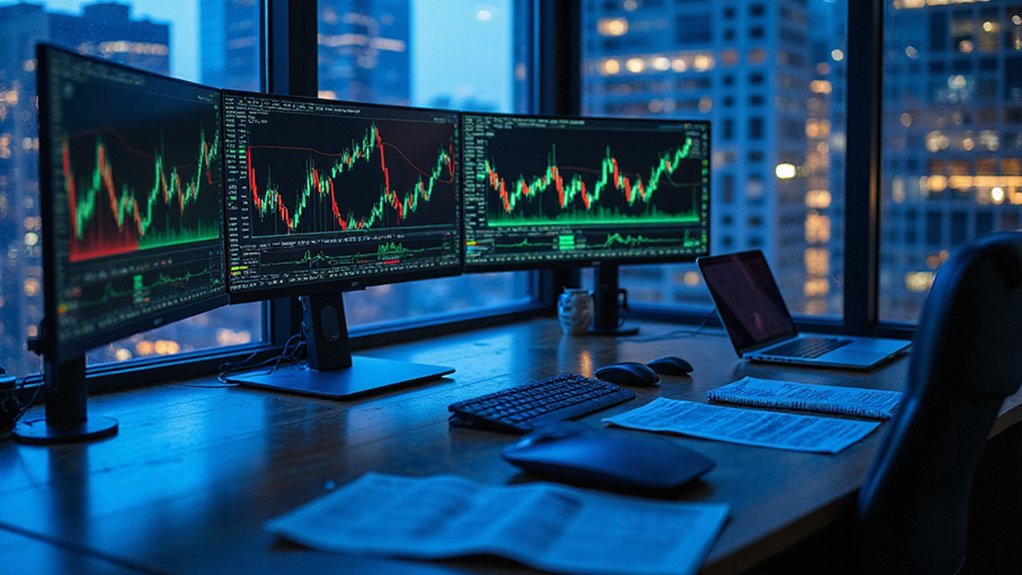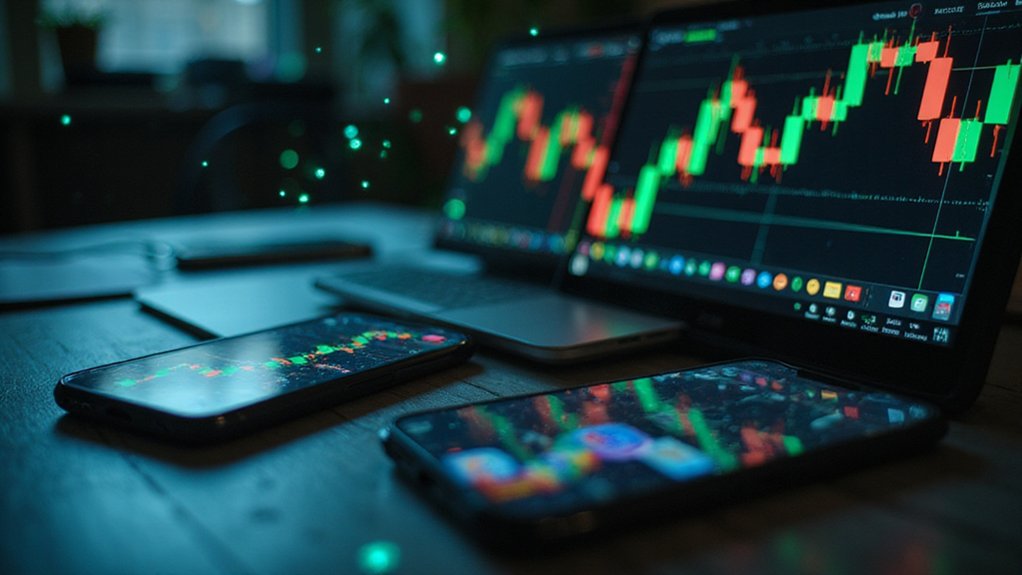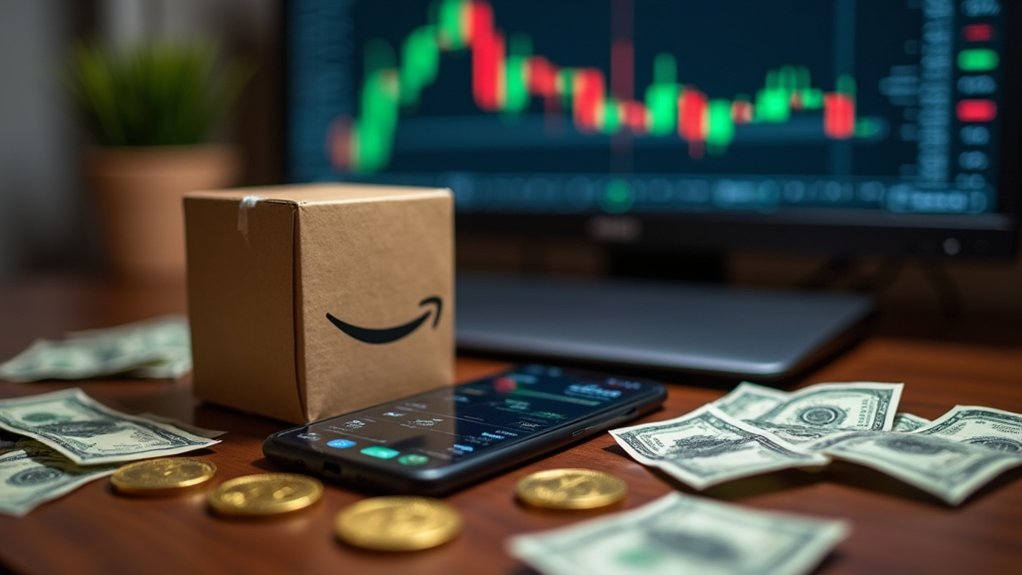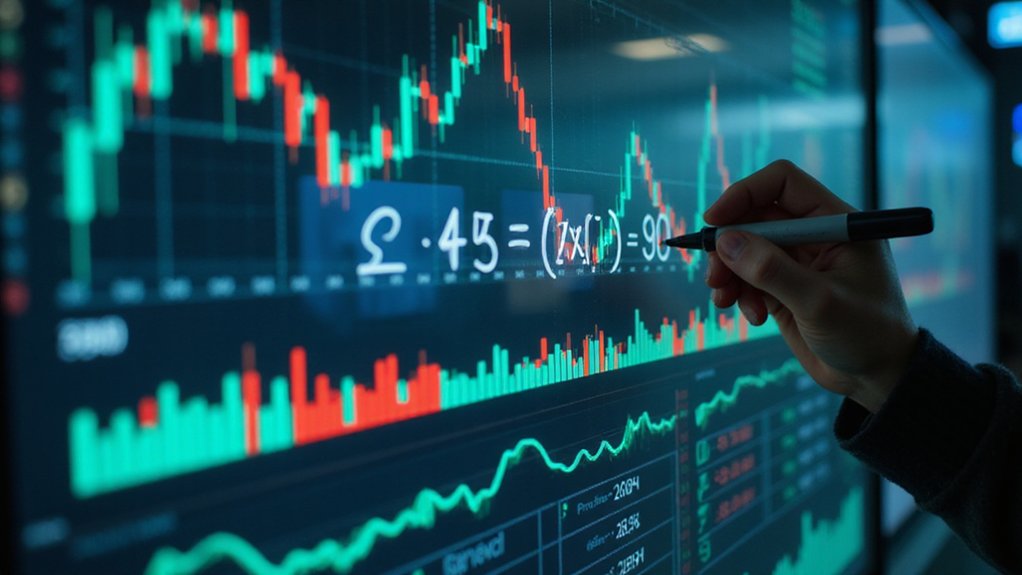The cryptocurrency markets, with their characteristic volatility that can evaporate fortunes faster than a leveraged trader’s margin account, have become the proving ground for artificial intelligence systems that promise to decode the seemingly random price movements plaguing digital assets.
These sophisticated algorithms process vast datasets at speeds that make human analysis appear positively glacial, monitoring over 500 trading pairs simultaneously while human traders struggle to track their morning coffee intake.
While traders fumble with basic portfolio management, AI systems effortlessly juggle hundreds of market variables with superhuman precision and speed.
Machine learning systems have evolved beyond simple pattern recognition, employing neural networks that mimic the human brain’s capacity for complex data correlation—though presumably with less tendency toward panic selling during market downturns.
These systems analyze millions of data points, including the increasingly relevant social media sentiment that can send Bitcoin soaring on a single billionaire’s tweet, demonstrating how traditional fundamental analysis has embraced the absurdity of meme-driven market movements.
The performance metrics suggest these AI-powered solutions deliver tangible advantages: well-configured trading bots achieve win rates of 60-65% in trending markets, while some systems report annual success rates exceeding 80%—figures that would make traditional hedge fund managers weep into their performance fees.
More practically, these systems reduce transaction costs by up to 32% while executing trades within milliseconds, a speed advantage that proves decisive when arbitrage opportunities exist for nanoseconds rather than minutes.
Perhaps most importantly, AI trading eliminates the emotional component that transforms rational investors into panic-stricken market participants during volatility spikes. The emergence of AI tokens has created a new investment category worth over $39 billion, offering traders exposure to the intersection of artificial intelligence and blockchain technology.
The technology processes over $50 billion in daily cryptocurrency trading volume, with automated systems now handling 70-80% of all trades—a statistic that suggests human traders have become the minority participants in their own markets. These AI systems track multiple digital assets across various exchanges simultaneously, providing comprehensive market coverage that individual traders cannot match through manual monitoring. Advanced algorithms utilize technical indicators like RSI and MACD to generate precise entry and exit points that traditional chart analysis might overlook.
The crypto trading bot market’s projected growth to $4.2 billion by 2026 reflects institutional recognition of AI’s competitive advantages, though investors should maintain healthy skepticism regarding systems promising guaranteed returns that would make Bernie Madoff blush.
Real-time signal generation and algorithmic strategies provide legitimate edges in markets where information asymmetry determines profitability, transforming headline analysis from art into quantifiable science through sophisticated data processing capabilities that surpass human analytical limitations.








